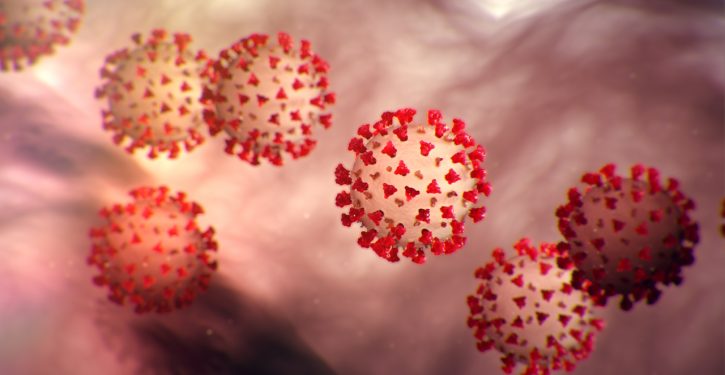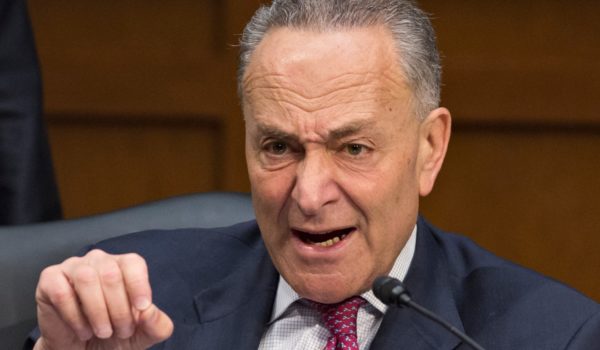
Bureaucratic requirements — not science — explain why it took until after the election for a COVID-19 vaccine to become available. The vaccines themselves were designed months ago. Indeed, Moderna designed its vaccine in January, when many Americans were unaware of the coronavirus. “The entire process took two days,” reports the New York Times. By late February, Moderna had “shipped out its first vaccine batches” to the National Institutes of Health, reports Business Insider:
Moderna designed its vaccine in just two days in January, before some people had even heard of the coronavirus. … By February 24, Moderna had shipped out its first vaccine batches to NIH scientists in Bethesda, Maryland. Researchers administered the first dose on March 16 in Seattle, Washington. That launched the first clinical trial of any coronavirus vaccine….Moderna’s coronavirus vaccine candidate is 94.5% effective at protecting people against COVID-19. …. Moderna will soon ask the FDA to authorize its coronavirus vaccine for emergency use, and Pfizer has already submitted its application.
But regulatory requirements greatly delayed approval of the vaccines. Bureaucrats failed to use suggested alternatives “to speed up the approval process.” As journalist Matthew Yglesias notes, “Moderna made this vaccine basically right away and the whole timeline has been testing & approvals.”
Federal bureaucrats repeatedly thwarted efforts to fight COVID-19. For weeks, the Centers for Disease Control required that people use only the coronavirus test designed by the CDC itself, not alternative tests, such as those approved by European regulators. The CDC’s own test turned out to be badly flawed. The CDC’s demand for control over testing greatly slowed down detection of the disease. Meanwhile, the CDC and FDA bureaucrats were preventing infectious disease expert Helen Chu from testing samples from many people with symptoms. The FDA refused to approve Chu’s test on the grounds that her lab “was not certified as a clinical laboratory under regulations established by the Centers for Medicare & Medicaid Services, a process that could take months.”
Will this presidential election be the most important in American history?
As The Dispatch notes, “Between early February and mid-March, the U.S. lost six crucial weeks because regulators stuck to rigid regulations instead of adapting as new information came in.” As NBC News noted, “We only need to take a look at South Korea,” which had far lower mortality, “to see how we could have been in a better position if we’d let private industry play a larger role in testing” for coronavirus.
The FDA’s restrictive and lackadaisical approach persisted despite objections from the White House, as captured in this passage of a Wall Street Journal article: “The idea to expand testing of drugs and other medical therapies was strongly opposed by the FDA’s senior scientists this week…and represented the most notable conflict between the FDA and the White House in recent memory.”
In March, the FDA told “at-home diagnostics companies to stop coronavirus test roll-outs.” Customers didn’t “get their results,” and were “told to destroy their test kits,” reported Reason Magazine.
These were decisions made by career federal employees, acting with their customary slowness and mental rigidity because they knew it was almost impossible to fire a government employee. Career FDA employees commonly take years to approve life-saving drugs. That results in the deaths of hundreds of thousands of people who could have been saved by earlier approval of those drugs. For example, at least a hundred thousand people died waiting for the FDA to approve beta blockers. One of the FDA officials involved in delaying their approval was John Nestor. Nestor was notorious for following rules in ways designed to frustrate and inconvenience other people. As the Journal of American Physicians and Surgeons notes,
Nestor had the unique habit of getting into the leftmost lane [on the highway] with his cruise control set at 55 mph, the posted speed limit. He would drive at this speed regardless of what came up behind him. Cars would zoom up close to his rear bumper; drivers would flash their lights and blast their horns, some swerving around him on the right while giving him the finger—none of this fazed Nestor in the least. As he explained it, 55 mph was the law, and he had a right to drive in whichever lane he chose: “Why should I inconvenience myself for someone who wants to speed?”
Nestor followed this rigid mindset in his work at the FDA. He was very good at using agency rules, and minor risks or side effects of drugs, as an excuse to avoid approving life-saving drugs.
The CDC gave inconsistent advice about COVID-19. On February 27, it advised people not to wear masks. That contradicted studies finding that even simple cloth masks can reduce the transmission of the virus. In April, the CDC switched its position to encourage people to wear marks.
FDA regulations thwarted the manufacturing of life-saving masks and respirators, discouraging any new company from producing them, and made it harder “to ramp up production of surgical masks and respirators.” As the Cato Institute’s Paul Matzko notes, the FDA subjects masks to needlessly complicated,
strict regulatory standards. For a manufacturer to produce a mask and bring it to market, it must pass through a battery of tests, submit a long and detailed report to the FDA, and then wait potentially months for approval…consider the FDA’s “premarket notification” guidelines for masks. First, you must describe the device and its intended use, including drawings, for which you will want to hire someone with fluency in bureaucratese and knowledge of the various regulations. Then, you will need to hire a team of materials scientists and medical researchers to perform a series of tests on your prototype masks. They will need to make “side by side” compositional comparisons between your mask and all masks currently on the market. You must prove that each of the hundreds of individual choices made when designing your masks — from any of dozens of different kinds of fibers, patterns of weave, color, type of elastic, and such — will enhance its “comparative safety and performance.”…Each of these steps has its own detailed guidelines to follow, forcing you to wade through documents with titles like the “ASTM F 1215–89” standard or the “MIL-M-36945C 4.4.1.1.1 Method 1 Military Specifications: Surgical Mask”…The average wait time for a medical device approval of this kind is half a year.




